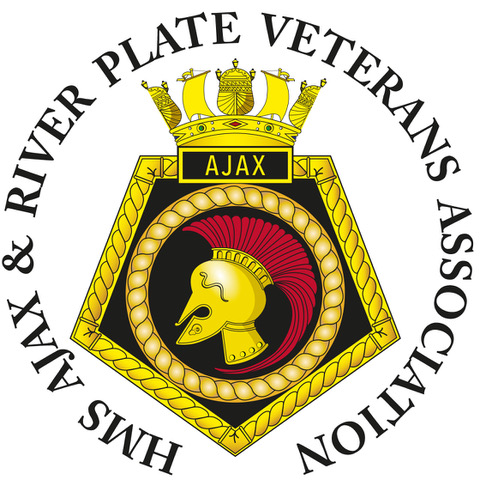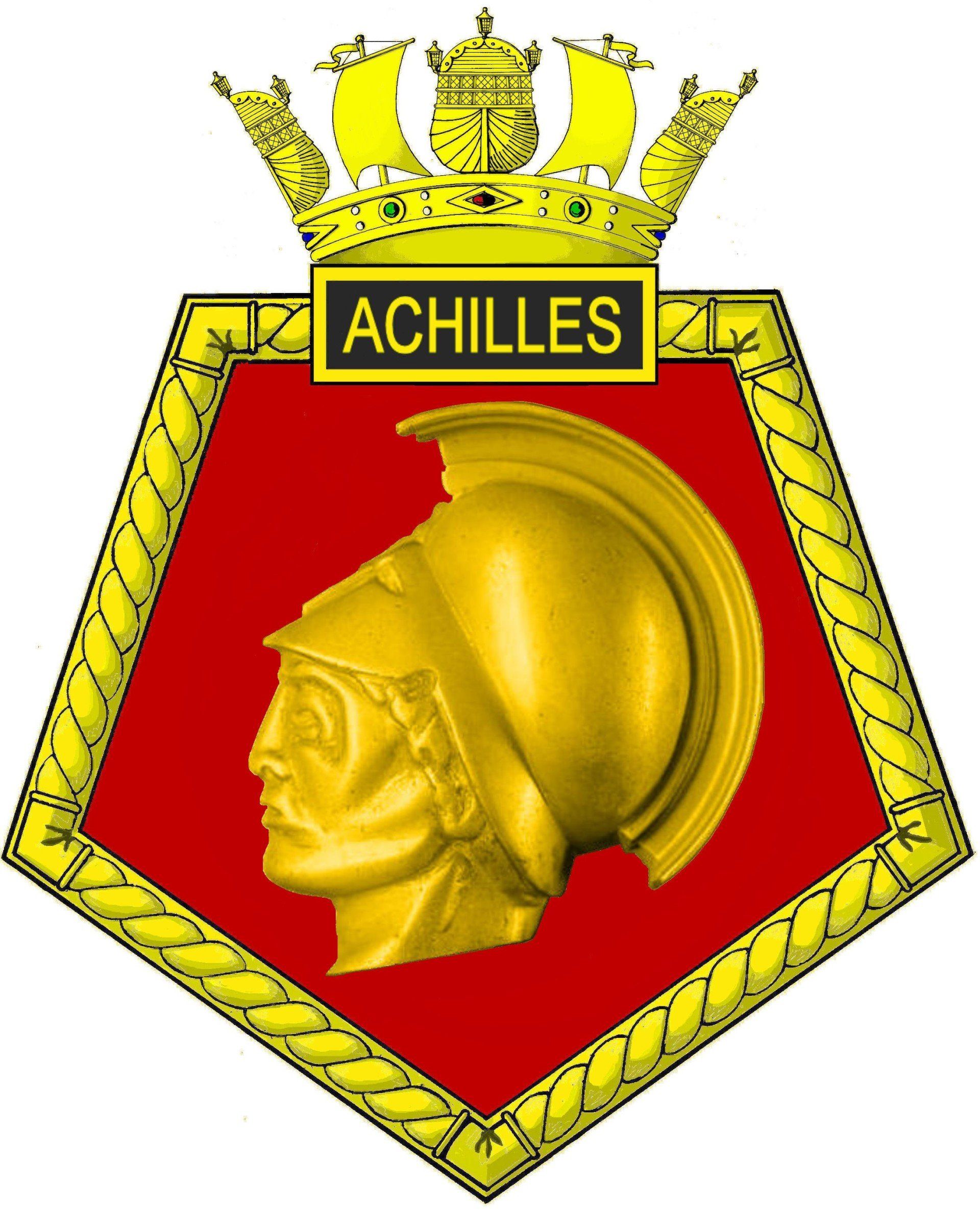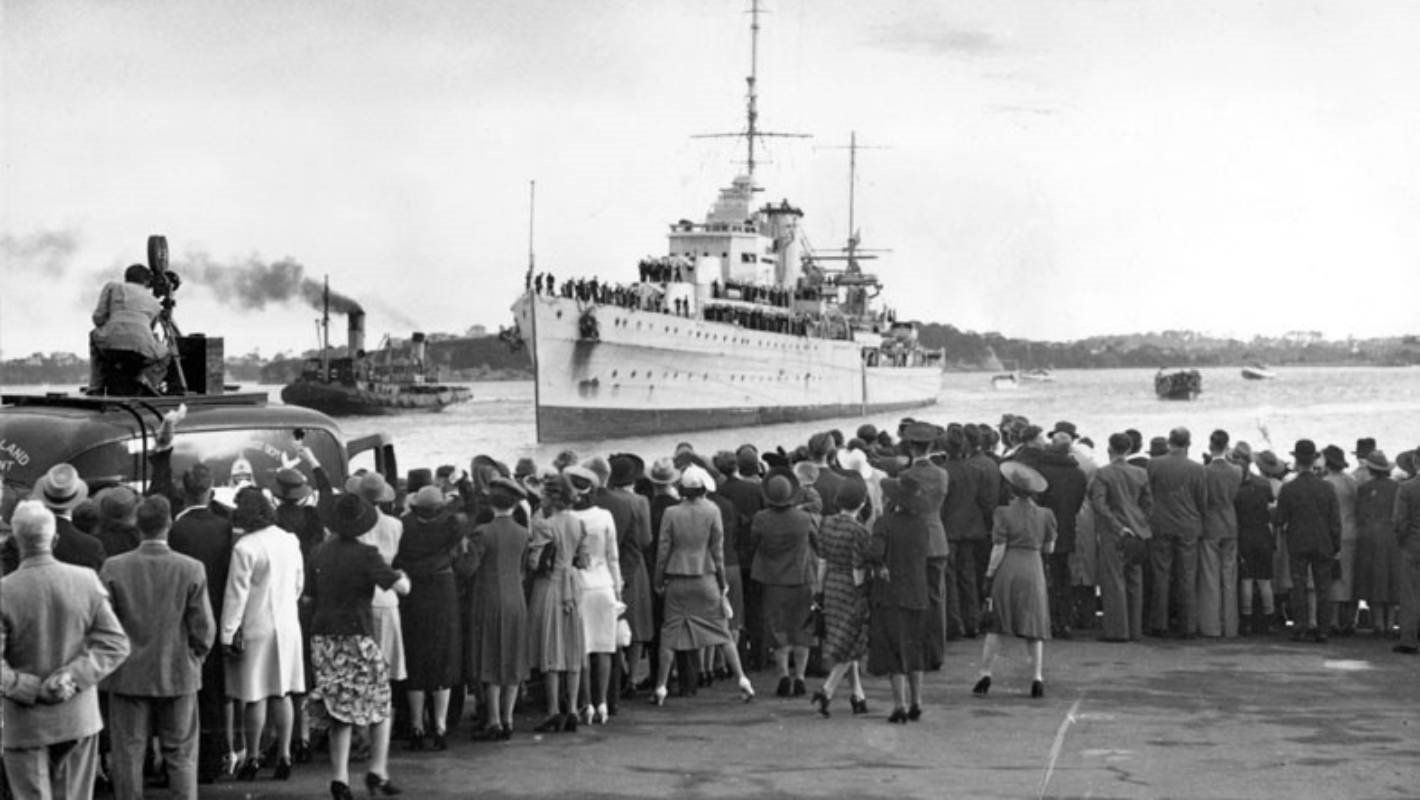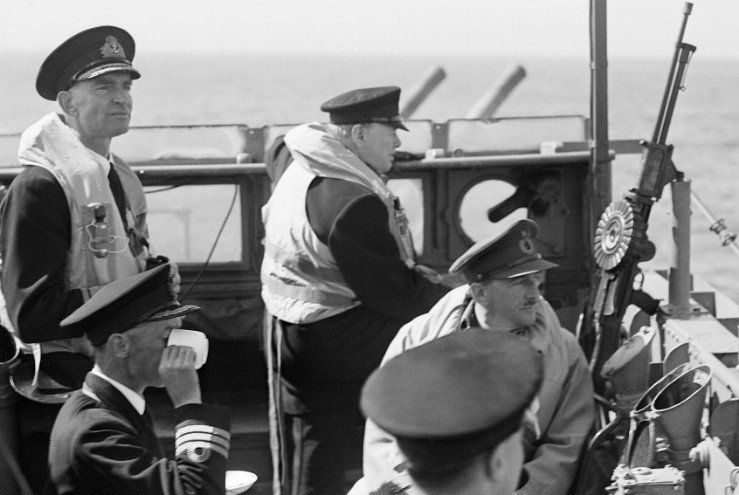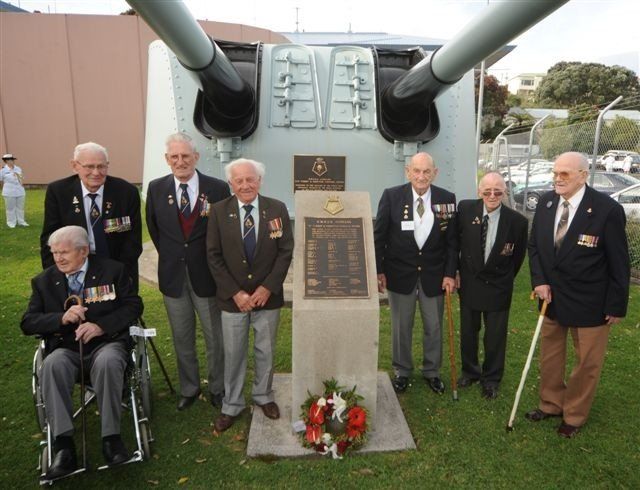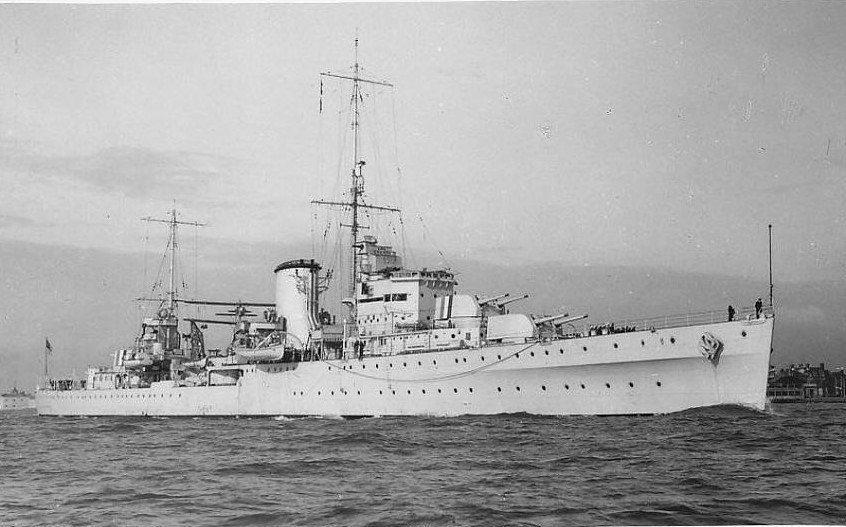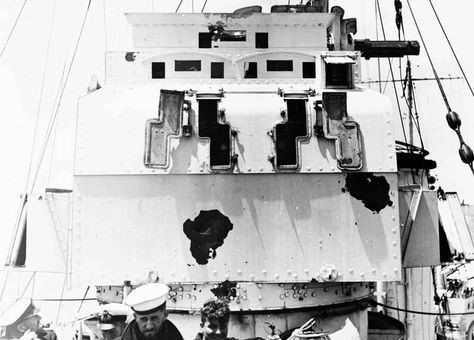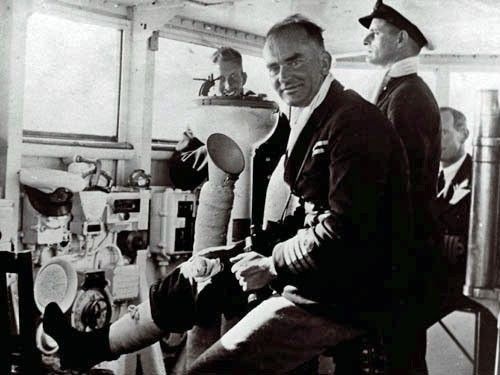HMS Achilles [Later HMNZS Achilles]
HMS Achilles – By Jonathan Harwood (Grandson of Admiral H Harwood)
Fifth in the Royal Navy to bear that name, HMS Achilles was a Leander class light cruiser and sister ship of HMS Ajax; 7,500 tons, built by Cammell Laird, Birkenhead. Achilles was launched in 1932 and commissioned October 1933. Initially out of service, she was loaned to the Royal New Zealand Navy in 1936. She served with the Royal Navy's New Zealand Division from 1937 up to the creation of the Royal New Zealand Navy, into which she was transferred in September 1941 and recommissioned HMNZS Achilles. Her crew was approximately 60 per cent from New Zealand. Although she was fitted to carry a Walrus seaplane, she was carrying no aircraft at the start of the war.
At the outbreak of the Second World War, Achilles began patrolling the Pacific west coast of South America looking for German merchant ships, but by October 1939 she was assigned to the South American Division under Commodore Harwood and allocated to Force G (with Exeter, Cumberland and Ajax).
During the Battle of the River Plate on 13th December 1939, Achilles fought alongside Ajax under a combined gunnery control. A near miss from an exploding 11” shell threw up shell fragments that not only killed four crewmen on deck and in the Director Control Tower above, but also injured Captain Parry on the bridge. After the blockade of Montevideo had ended with the Admiral Graf Spee being scuttled on 17th December, Achilles spent Christmas in the Falkland Islands before returning to Buenos Aires in Argentina where there were stories of crew members meeting and drinking with German sailors from Admiral Graf Spee. After HMS Ajax departed for Britain, Rear Admiral Harwood transferred his flag to Achilles until February 1940 when she left for New Zealand and Harwood remained in South America in HMS Hawkins.
During the refit in Auckland, Achilles became notable for being the first Royal Navy cruiser to have fire (gunnery) control radar, with the installation of the New Zealand-made SS1 fire-control radar. From June 1940 until she was re-commissioned in 1941 as HMNZS Achilles, the ship saw service escorting convoys before joining US Navy Task Force 67.
While operating off Guadalcanal Island in January 1943, Achilles was attacked by four Japanese aircraft. A bomb blew the top off X turret, killing 13 sailors. This resulted in her being sent back to Britain for repairs and a refit, following which she returned to the Pacific war, stationed off Okinawa at the end of the war with Japan.
After the war, Achilles was returned to the Royal Navy in September 1946. She was then sold to the Indian Navy and recommissioned on 5 July 1948 initially as RINS Delhi, later (after independence) INS Delhi. She remained in service with the Indian Navy until decommissioned for scrap in 1978. In Madras on 4 September 1975 she met up with the frigate HMS Ajax who was on her world cruise. As part of the scrapping her Y turret was removed and presented as a gift to the New Zealand government. It is now on display at the entrance of Devonport Naval Base in Auckland.
HMS Achilles played herself in the film ‘The Battle of the River Plate’ in 1956.
Captain William Parry of HMS Achilles
William Edward Parry joined the Royal Navy 1905 and served in the First World War. During the Battle of the River Plate he was captain of HMS Achilles and was wounded in both legs when shrapnel hit the bridge. In 1943 he assumed command of HMS Renown, a battlecruiser. He took part in the Normandy Landings and served on the staff of Allied Naval Commander-in-Chief of the Expeditionary Force in 1944. After the war he became Deputy Head of the Naval Division in Germany followed by Director of Naval Intelligence. In 1948 he became Chief of Naval Staff (Commander-in-Chief) of the Royal Indian Navy. He was advanced from Companion to Knight Commander of the Order of the Bath before retiring in 1951. He died in 1973, aged 79.
Images from Battle of the River Plate by Torpedo Bay Naval Museum can be found HERE
Launch Facts & Images
Achilles Crossed the Bar List
River Plate Crew List
Achilles Itinerary
HMS Achilles
Motto: Fortiter in Re
– Bravery in Action
Battle Honours
Belle Ile 1761; Trafalgar 1805; Leopard 1917; River Plate 1939; Guadalcanal 1942-3; Okinawa 1945
Builder: Cammell Laird, Birkenhead, England [sister ship to Ajax]
Laid down: 11 June 1931
Launched: 1 September 1932
Commissioned: 10 October 1933
Identification: Pennant number: 70
On Loan to Royal Navy New Zealand Division 1 October 1936 but retained HMS title
Commissioned: 1 October 1941 as HMNZS Achilles on formation of New Zealand Navy
Decommissioned: 17 September 1946 & Returned to Royal Navy
Sold to Indian Navy 5 July 1948 and commissioned as INS Delhi.
Decommissioned for scrap at Bombay 30 June 1978
Class and type: Leander-class light cruiser
Displacement
7,270 tons standard
9,740 tons full load
Length: 555.5ft (169.3m)
Beam: 56ft (17m)
Draught: 19.1ft (5.8m)
Installed power: 73,280 shaft horsepower
Propulsion:
Four Parsons geared steam turbines
Six Yarrow boilers
Four shafts
Speed: 32.5 knots (60km/h)
Range: 5,730 nautical miles (10,610km; 6,590 miles) at 13 knots (24km/h)
Complement: peacetime 550; wartime 680.
At time of River Plate approx. 60% were from New Zealand
Armament:
8× BL 6in Mk.XXIII (152mm L/50) guns, twin turrets Mk.XXI ‘A’ & ‘B’ Turrets forward; ‘X’ & ‘Y’ Aft
4× QF 4in Mk.V (102mm L/45) guns, single mounts HA Mk.IV
2× QF 0.5in Mk.III Vickers (12.7mm) machine guns, quad mounts Mk.I
8 (2×4) tubes for 21-inch (533mm) torpedo Mk.IX
Armour:
3in magazine box
1 inch deck
1 inch turrets
Aircraft carried: Originally fitted with, probably, either Fairey 111 or Hawker Osprey.
In April 1936 she had the Walrus, one or two, but before the outbreak of war they had been lost and therefore had none at the time of the River Plate.
